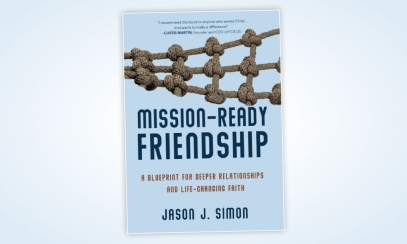
Festive Faith: Celebrations Through the Year and Around the World by Steffani Aquila
FAITH Catholic editor Nicole O’Leary spoke recently with Steffani Aquila, a national Catholic speaker and author of the award-winning book, Festive Faith: Celebrations Through the Year and Around the World. Steffani is the founder of His Girl Sunday, a ministry and small business that supports individuals, families, and parishes in liturgical living, traditions and Catholic culture. She has a master’s degree in theological studies and 17 years of experience working for Catholic institutions. Published by Ave Maria Press, Festive Faith is a celebration of Catholic heritage and a roadmap for embracing liturgical living in today’s world.
FAITH Catholic editor Nicole O’Leary spoke recently with Steffani Aquila, a national Catholic speaker and author of the award-winning book, Festive Faith: Celebrations Through the Year and Around the World. Steffani is the founder of His Girl Sunday, a ministry and small business that supports individuals, families, and parishes in liturgical living, traditions and Catholic culture. She has a master’s degree in theological studies and 17 years of experience working for Catholic institutions. Published by Ave Maria Press, Festive Faith is a celebration of Catholic heritage and a roadmap for embracing liturgical living in today’s world.
Q: What inspired you to write Festive Faith?
I wrote Festive Faith because I saw a need – one that became clear the more I looked at modern interpretations of liturgical living. So much of what I found was geared toward young children, full of crafts, activities and catechetical lessons. While I believe there is obvious value in teaching the faith to our children, this wasn’t liturgical living as I had experienced growing up and it didn’t speak to the Church’s view on liturgy, culture or festivity. For me, liturgical living was intergenerational, timeless and deeply rooted in tradition. There was a place for everyone – men, women, young adults, families with children, single people and empty nesters. The seasons and the Church year guided the way we interacted with the world. But, unfortunately, much of that has been lost. I also saw a growing hunger among Catholics – people of all ages and walks of life –who wanted to live the liturgical year in a way that felt authentic and attainable. I like to think of it simply: If the liturgy is for everyone, then liturgical living must be, too. It just makes sense – carrying the ritual of the Church into the ritual of daily life.
What is liturgical living and why is it important?
Liturgical living is the external gesture and practice of praising God. Practically speaking, it is taking that desire to praise God and looking to the natural seasons and the liturgical calendar as our guide for celebrating feasts and seasons in the Church with food, prayers, devotions, customs and traditions. Additionally, the liturgical year takes you through the entire life of Christ, so not only do we become bonded to Jesus by walking alongside him throughout the year; he walks with us in our joys and sufferings, too. Why is it important? Because our faith isn’t meant to be something we experience only for one hour on Sundays. The Church, in her wisdom, gives us a whole calendar filled with moments to fast, feast, reflect and rejoice – always drawing us deeper into the mystery of Christ.
What will readers find in your book?
In order to help parishes and households revive their Catholic traditions, I had to understand why those traditions had faded. Two things became clear: many people either didn’t know the reasons behind them, or they struggled to see how to pass them down. This realization motivated me to explain the why of orthodox liturgical theology and the how of bringing it to life in both the home and the parish. Each chapter is structured around the seasons of the Church year, highlighting the most significant Catholic traditions. For each one, I explore its historical and liturgical roots and show how it can be lived out today in a way that is both timeless and accessible to each generation.
In your introduction, you stress the importance of what you call “village Catholicism.” What do you mean by this, and why do you believe it is necessary?
I use this term to paint a picture of what it could look like to live with greater ease and deeper joy – in and with community again. So many of our struggles today stem from isolation. But countless studies affirm that the path to healing, wholeness and true joy is found in community. God designed us to live as a village of believers, creating us in his own image. God himself is a communion of persons. We exist in the communion of saints, and at the very heart of our faith is the Eucharist – what we also call Communion. I often hear that liturgical living feels overwhelming, and understandably so. But this is where parishes are uniquely positioned to break down these barriers and restore communal life. And the liturgical year itself is our God-given roadmap, drawing us back into that village.
What is your favorite tradition in the book?
Hands down, our Solemnity of St. John the Baptist bonfire is one of the highlights of the year. His feast – often called the "summer Christmas" because of his relationship to Christ and his birth just six months before – is the perfect occasion for gathering in community. Our parish priest blesses the bonfire, and from there, the night unfolds with music, food, and joyful conversation under the stars. There’s a place for everyone – the kids and teens run around, while the adults relax and catch up. In many ways, it feels like we’ve "baptized" the summer barbecues of my childhood, infusing them with the rich traditions of our faith.
Festive Faith was published in October 2024 and is available from Ave Maria Press: avemariapress.com.


